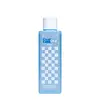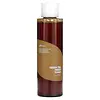What's inside
What's inside
 Key Ingredients
Key Ingredients

 Benefits
Benefits

 Ingredients Side-by-side
Ingredients Side-by-side

Water
Skin ConditioningGlycerin
HumectantDipropylene Glycol
HumectantPropanediol
Solvent1,2-Hexanediol
Skin ConditioningCentella Asiatica Extract
CleansingAllantoin
Skin ConditioningPanthenol
Skin ConditioningPortulaca Oleracea Extract
Skin ConditioningFicus Carica Fruit Extract
HumectantAlbatrellus Confluens Extract
HumectantHydrogenated Lecithin
EmulsifyingSodium Hyaluronate
HumectantTrehalose
HumectantSodium Citrate
BufferingHydroxyacetophenone
AntioxidantEthylhexylglycerin
Skin ConditioningButylene Glycol
HumectantCitric Acid
BufferingSodium Phytate
Ceramide NP
Skin ConditioningTocopherol
AntioxidantDimethylsilanol Hyaluronate
HumectantHydrolyzed Sodium Hyaluronate
Skin ConditioningHydrolyzed Hyaluronic Acid
HumectantPotassium Hyaluronate
Skin ConditioningHyaluronic Acid
HumectantSaccharomyces Ferment Filtrate
HumectantSodium Hyaluronate Crosspolymer
HumectantHydroxypropyltrimonium Hyaluronate
Sodium Hyaluronate Dimethylsilanol
HumectantSodium Acetylated Hyaluronate
HumectantWater, Glycerin, Dipropylene Glycol, Propanediol, 1,2-Hexanediol, Centella Asiatica Extract, Allantoin, Panthenol, Portulaca Oleracea Extract, Ficus Carica Fruit Extract, Albatrellus Confluens Extract, Hydrogenated Lecithin, Sodium Hyaluronate, Trehalose, Sodium Citrate, Hydroxyacetophenone, Ethylhexylglycerin, Butylene Glycol, Citric Acid, Sodium Phytate, Ceramide NP, Tocopherol, Dimethylsilanol Hyaluronate, Hydrolyzed Sodium Hyaluronate, Hydrolyzed Hyaluronic Acid, Potassium Hyaluronate, Hyaluronic Acid, Saccharomyces Ferment Filtrate, Sodium Hyaluronate Crosspolymer, Hydroxypropyltrimonium Hyaluronate, Sodium Hyaluronate Dimethylsilanol, Sodium Acetylated Hyaluronate
Water
Skin Conditioning1,2-Hexanediol
Skin ConditioningHydroxyacetophenone
AntioxidantCamellia Sinensis Leaf Extract
AntimicrobialAmmonium Acryloyldimethyltaurate/Vp Copolymer
Allantoin
Skin ConditioningDisodium EDTA
Butylene Glycol
HumectantDipotassium Glycyrrhizate
HumectantHydrolyzed Hyaluronic Acid
HumectantPhenoxyethanol
PreservativeBeta-Glucan
Skin ConditioningGinkgo Biloba Leaf Extract
Skin ConditioningCentella Asiatica Extract
CleansingSalix Alba Bark Extract
AstringentVaccinium Angustifolium Fruit Extract
Skin ProtectingEthylhexylglycerin
Skin ConditioningPinus Palustris Leaf Extract
TonicUlmus Davidiana Root Extract
Skin ConditioningOenothera Biennis Flower Extract
AstringentPueraria Lobata Root Extract
HumectantWater, 1,2-Hexanediol, Hydroxyacetophenone, Camellia Sinensis Leaf Extract, Ammonium Acryloyldimethyltaurate/Vp Copolymer, Allantoin, Disodium EDTA, Butylene Glycol, Dipotassium Glycyrrhizate, Hydrolyzed Hyaluronic Acid, Phenoxyethanol, Beta-Glucan, Ginkgo Biloba Leaf Extract, Centella Asiatica Extract, Salix Alba Bark Extract, Vaccinium Angustifolium Fruit Extract, Ethylhexylglycerin, Pinus Palustris Leaf Extract, Ulmus Davidiana Root Extract, Oenothera Biennis Flower Extract, Pueraria Lobata Root Extract
 Reviews
Reviews

Ingredients Explained
These ingredients are found in both products.
Ingredients higher up in an ingredient list are typically present in a larger amount.
1,2-Hexanediol is a synthetic liquid and another multi-functional powerhouse.
It is a:
- Humectant, drawing moisture into the skin
- Emollient, helping to soften skin
- Solvent, dispersing and stabilizing formulas
- Preservative booster, enhancing the antimicrobial activity of other preservatives
Allantoin is a soothing ingredient known for its protective and moisturizingg properties. Because of this, it is often added to products with strong active ingredients.
Studies show higher concentrations of this ingredient can promote wound healing.
Though it can be derived from the comfrey plant, allantoin is produced synthetically for cosmetic products to ensure purity.
Learn more about AllantoinButylene Glycol (or BG) is used within cosmetic products for a few different reasons:
Overall, Butylene Glycol is a safe and well-rounded ingredient that works well with other ingredients.
Though this ingredient works well with most skin types, some people with sensitive skin may experience a reaction such as allergic rashes, closed comedones, or itchiness.
Learn more about Butylene GlycolCentella Asiatica Extract (Centella) is derived from an herb native to Southeast Asia. It is famous for its anti-inflammatory and soothing properties.
Centella is rich in antioxidants and amino acids, such as Madecassic Acid and Asiaticoside.
Studies show the compounds in centella help with:
The combination of all these properties makes centella effective at soothing, hydrating, and protecting the skin.
Other great components of centella include Vitamin A, vitamin C, several B vitamins, and Asiatic Acid.
Fun fact: Centella has been used as a medicine and in food for many centuries. As a medicine, it is used to treat burns, scratches, and wounds.
Learn more about Centella Asiatica ExtractEthylhexylglycerin (we can't pronounce this either) is commonly used as a preservative and skin softener. It is derived from glyceryl.
You might see Ethylhexylglycerin often paired with other preservatives such as phenoxyethanol. Ethylhexylglycerin has been found to increase the effectiveness of these other preservatives.
Hydrolyzed Hyaluronic Acid is a form of hyaluronic acid. It is created by the hydrolysis of hyaluronic acid with a high molecular weight. Once created, Hydrolyzed Hyaluronic Acid has a low molecular weight.
Low molecular weight HA has been shown to hydrate and increase elasticity of the skin. Increasing elasticity is also associated with reduction of wrinkle depth.
One study found topical low molecular weight hyaluronic acid may be considered for the treatment of rosacea in the adult population. However, we always recommend speaking with a professional about your skin concerns.
Hyaluronic acids are a humectant. This means they draw moisture from the air. Hyaluronic acids help moisturize, soothe, and protect the skin.
Read more about other common forms of hyaluronic acid:
Learn more about Hydrolyzed Hyaluronic AcidHydroxyacetophenone is antioxidant with skin conditioning and soothing properties. It also boosts the efficiency of preservatives.
This ingredient is not irritating or sensitizing.
Water. It's the most common cosmetic ingredient of all. You'll usually see it at the top of ingredient lists, meaning that it makes up the largest part of the product.
So why is it so popular? Water most often acts as a solvent - this means that it helps dissolve other ingredients into the formulation.
You'll also recognize water as that liquid we all need to stay alive. If you see this, drink a glass of water. Stay hydrated!
Learn more about Water